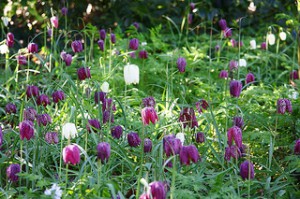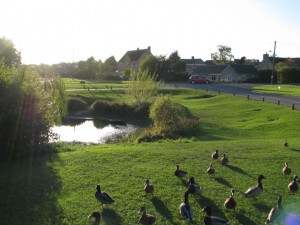Falling Down the Thames Blog 40, 17th December 2014
Thames River Ducks and Flowers
Malta is a small island nation off the south coast of Italy. Despite being only 320 square kilometres in area, much smaller than the Isle of Wight, it manages to pack in 423,000 citizens. It is, by anyone’s reckoning, the most densely-populated country in Europe.
The second most densely-populated country in Europe is a surprise to many. It is England. Slightly smaller than Greece but with nearly five times as many people, England’s green and pleasant land is kinda full. Not surprisingly, the whole nation has been transformed by the actions of humans.
That isn’t to say that England doesn’t have a large number of regions of great natural beauty and biological diversity. Next April, at the end of our first day of paddling, Krista and I will arrive in the community of Cricklade. Immediately adjacent to the River Thames is the Cricklade North Meadow National Nature Reserve. In addition to being a Special Area of Conservation, the nature reserve is a Site of Special Scientific Interest, operated by the group Natural England.
The single most significant thing about the nature reserve in Cricklade is the snake’s head fritillary, a flowering plant known by the scientific name Fritillaria meleagris. Eighty percent of the total British population of this flowering plant is found in Cricklade. When the fritillary is in bloom, guided tours of the area are provided by the reserve’s manager. Conditional on the Spring weather, it is likely that the flower will be at its peak of flowering just as we paddle past.
However, I have never taken the opportunity to do one fun thing when two fun things are on offer. On the 23rd of April, Krista and I are scheduled to paddle the thirty-three kilometre segment of the River Thames between Tadpole Bridge and the city of Oxford. A short distance north of the river is the community of Ducklington. It sounds like an absolutely smashing place. Locals claim that the village’s name is derived from its duckpond where ducks have dwelt for centuries. The community has a cricket club, a football club, and its own Morris dance tradition. Each of the years at the primary school are named after birds, and year five is the “Kingfishers”, just like our mascot, Alfred. Best of all, each year, Ducklington hosts a festival dedicated to the snake’s head fritillary. The exact timing of the festival depends of the blooming of the weather, but it is always scheduled for a Sunday…
Darn it! April 23 is a Thursday not a Sunday. Does that mean that Krista and I will miss the flower and the ducks? Not at all.
One of the nicest things about planning Falling Down the Thames has been the positive responses to our requests for information and assistance. The minister at the church in Ducklington, Bob Edy, responded enthusiastically to our request for help. He explained that someone from the village, possible him, would meet Krista and I at the river, drive us to Ducklington, and show us around before returning us to our canoe. With any luck we will see the special plant, toss a few chunks of bread to the ducks, and then set off for new adventures. And what could be better?
- Glen
Photo credits: snake’s head fritillary - www.flickr.com/photos/chodhound/7107620233/; duckpond in Ducklington - www.ducklingtonparishcouncil.gov.uk/services/village-pond/


